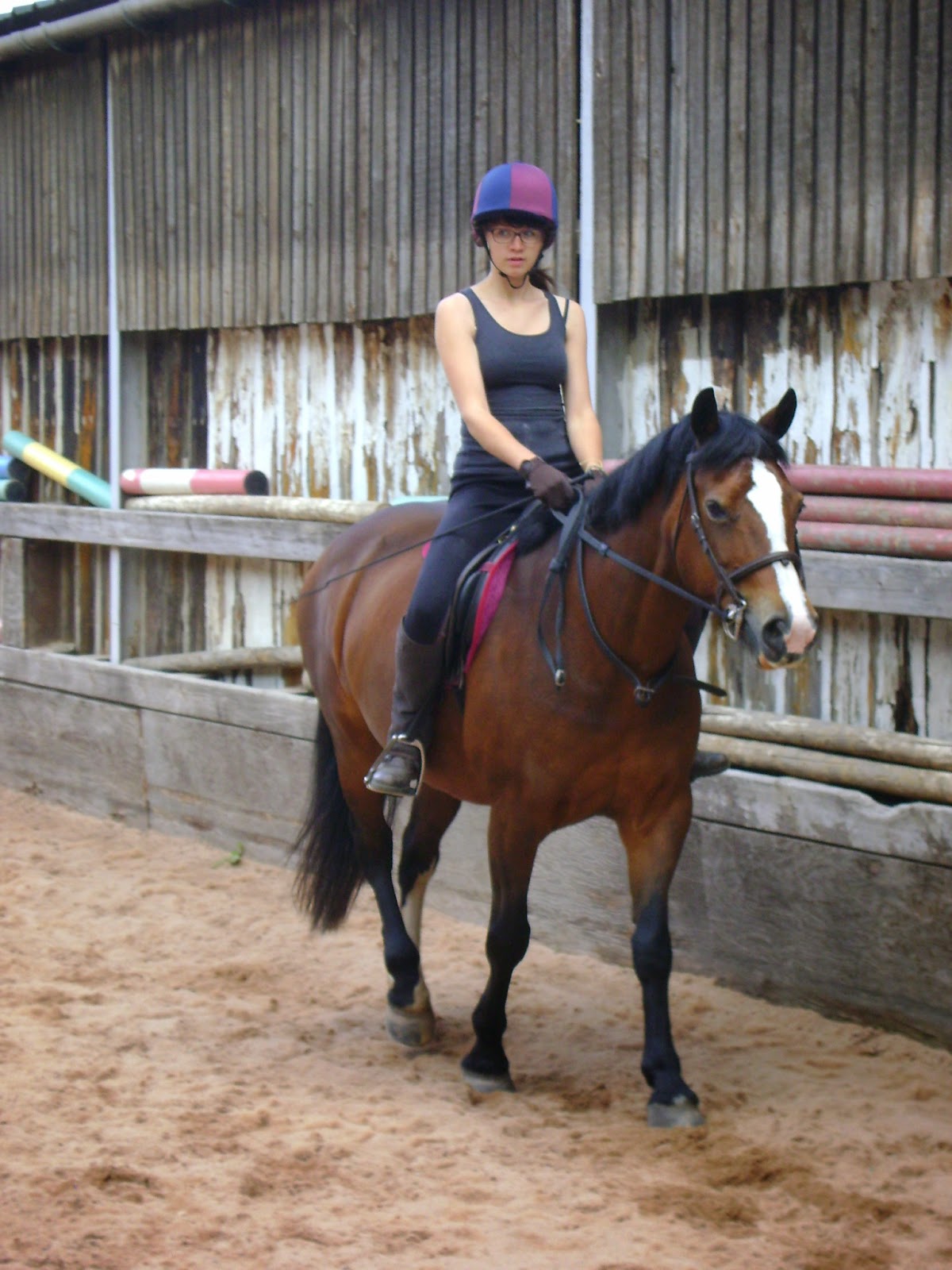Basic horse colours
Since I got my copy of The Equine Tapestry for Christmas, I feel like I have a lot to learn about horse colours. As a kid I was proud of myself for knowing bay from brown and skewbald from piebald: the book makes it obvious that there is a lot more to know!
Basic Horse Colours - Extension and Agouti loci
Heather, the Welsh Cob mare I rode as a teenager, was bay. According to the book, bay is the original colour of the species Equus ferus caballus. She produces black pigment at her mane and points, so must have a copy of the dominant, wild-type E allele at Extension. I don't know if she's homozygous (EE) or heterozygous (Ee) though.
Basic Horse Colours - Extension and Agouti loci
Heather, the Welsh Cob mare I rode as a teenager, was bay. According to the book, bay is the original colour of the species Equus ferus caballus. She produces black pigment at her mane and points, so must have a copy of the dominant, wild-type E allele at Extension. I don't know if she's homozygous (EE) or heterozygous (Ee) though.
However, Heather wasn't black all over, so we know the effect of the E allele was modulated by the dominant A allele at Agouti. Again, I don't know if she had two copies (AA) or a copy of the dominant A and the recessive a (Aa), but the combination of Extension and Agouti had her turn out bay.
From time to time, Heather also had dapples. These take the form of lighter spots "blooming" from her coat, so are likely condition dapples rather than sooty dapples (a dark overlay on the coat).
Marley, who I rode at uni, was quite simply black. Again, he had EE or Ee at extension to make production of black pigment possible.
However at Agouti he had no copy of the dominant A gene to restrict black hair to certain parts of his body. Instead he was homozygous for the recessive a allele (aa).
It's been a few years since I regularly rode a chestnut horse, but this is Bob who I started out on. (I don't know who his rider is here.) At Extension, chestnut is produced by a homozygous recessive ee combination. However, we don't know what he has at Agouti because there is no black hair for it to act on, so he could be carrying any combination of agouti alleles. (I really hope I've got that right.)
Bob had a flaxen mane and tail, which may come from a variety of genetic factors (although some people think it is a single recessive gene, like chestnut itself).
Getting my head around those was hard enough - it's quite a while since I did anything like this at uni - and the dilutes and white hairs only make it more complicated, but I'll keep trying!





Comments
Post a Comment